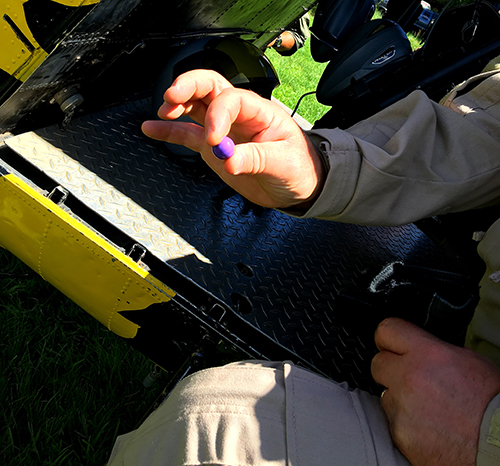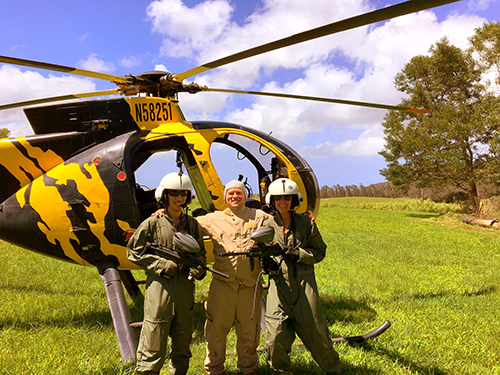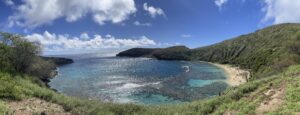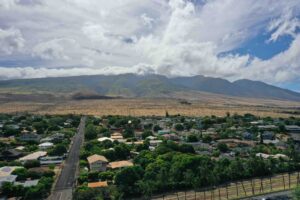By Kimberly Burnett and Christopher Wada
Miconia calvescens is an invasive tree native to South and Central America that grows up to 50 feet with shallow root systems that promote erosion. The trees form thick monotypic stands, shading out native plants and threatening the watershed function of Hawaii’s forests. The quick growing miconia can mature in four years and produce 3 million seeds several times a year. It is thought that these seeds can remain viable for at least 18 years, and possibly much longer, before sprouting, potentially many more. Birds spread the tiny seeds when they eat the fruit, as do people when contaminated dirt or mud sticks to shoes, clothing, equipment, or vehicles.


Photo credit: Kimberly Burnett
Miconia was introduced to Maui in the early 1970s at a private nursery and botanical gardens near Hana, and now occurs in approximately 37,000 acres throughout East Maui. Maui Invasive Species Committee (MISC) has been managing Miconia for the last two decades, primarily through the use of ground crews and aerial treatment via long-line spray ball. Herbicide ballistic technology (HBT) was recently developed by Dr. James Leary (CTAHR, UH Manoa) as a way to complement these management strategies. The HBT platform delivers small amounts of herbicide into plant tissue from the air, allowing management in otherwise inaccessible locations. The herbicide is delivered via a small projectile fired from a device similar to a paintball gun.


UHERO’s Project Environment will be working with Dr. Leary to assess the cost-effectiveness of HBT technology relative to other management strategies. Key research questions include how to optimize frequency of surveillance, how to minimize the cost of reducing the population to a target level, where to focus HBT efforts (low density, isolated, high elevation/rainfall areas), and how to best combine HBT with other management strategies for maximum cost effectiveness.
For more on the economics of Miconia from UHERO, see:
Economic impacts of non-indigenous species: Miconia and the Hawaiian economy
Invasive Species Control over Space and Time: Miconia calvescens on Oahu, Hawaii
Economic lessons from control efforts for an invasive species: Miconia calvescens in Hawaii
Prevention, Eradication, and Containment of Invasive Species: Illustrations from Hawaii
Control of Invasive Species: Lessons from Miconia in Hawaii
An Economic Assessment of Biological Control for Miconia calvescens in Hawaii
BLOG POSTS ARE PRELIMINARY MATERIALS CIRCULATED TO STIMULATE DISCUSSION AND CRITICAL COMMENT. THE VIEWS EXPRESSED ARE THOSE OF THE INDIVIDUAL AUTHORS. WHILE BLOG POSTS BENEFIT FROM ACTIVE UHERO DISCUSSION, THEY HAVE NOT UNDERGONE FORMAL ACADEMIC PEER REVIEW.





